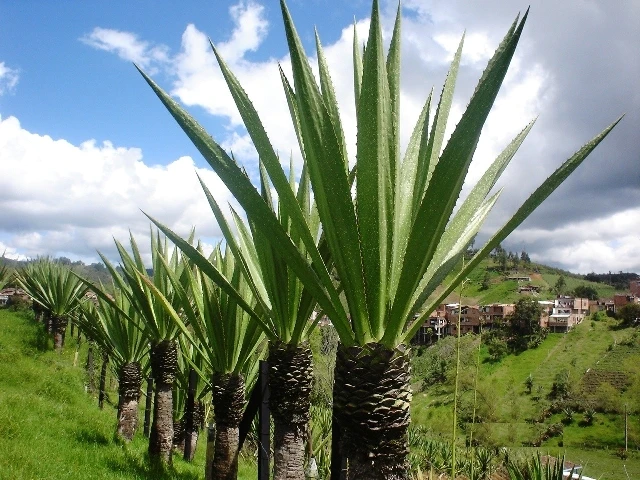Pacpa
(Furcraea andina)
Pacpa (Furcraea andina)
/
/

Abelneon
CC BY-SA 3.0
Image By:
Abelneon
Recorded By:
Copyright:
CC BY-SA 3.0
Copyright Notice:
Photo by: Abelneon | License Type: CC BY-SA 3.0 | License URL: https://creativecommons.org/licenses/by-sa/3.0 | Uploader: Abelneon | Publisher: Wikimedia Commons | Title: Fique.jpg |






















Estimated Native Range
Climate Requirements for Danbury, Connecticut
| This Plant | Your Site | Plant Suitability for Your Location | ||
|---|---|---|---|---|
| • Precipitation | 19" - 96" | 49" | Aquatic | Aquatic |
| • High Temp. | 60°F - 90°F | 83°F | Your summer temperatures are normal for this plant. | Excellent |
| • Low Temp. | 38°F - 67°F | 17°F | Your winter temperatures may be too cold for this plant | Too cold |
This plant may not grow well at your location - your precipitation is too high.
Summary
Furcraea andina, commonly known as Pacpa, is an evergreen succulent plant native to the Andean region of South America, particularly in Colombia and Ecuador. It thrives in semi-arid to arid environments, often found on rocky slopes and in xeric scrublands. Furcraea andina typically reaches a height of 6-8 feet (1.8-2.4 meters) and a width of 3-4 feet (0.9-1.2 meters). It has a rosette form with long, sword-shaped leaves that are green to blue-green in color. While it rarely flowers in cultivation, when it does, it produces a tall flower stalk with greenish-white flowers.
Pacpa is appreciated for its architectural form and is often used as a focal point in xeriscaping and drought-tolerant gardens. It is also suitable for container gardening and can be used to create dramatic effects in rock gardens. This succulent is relatively low-maintenance, requiring minimal watering once established. It prefers well-draining soil and full sun exposure to thrive. Although it is generally pest-resistant, it can be susceptible to mealybugs and scale insects.CC BY-SA 4.0
Pacpa is appreciated for its architectural form and is often used as a focal point in xeriscaping and drought-tolerant gardens. It is also suitable for container gardening and can be used to create dramatic effects in rock gardens. This succulent is relatively low-maintenance, requiring minimal watering once established. It prefers well-draining soil and full sun exposure to thrive. Although it is generally pest-resistant, it can be susceptible to mealybugs and scale insects.CC BY-SA 4.0
Plant Description
- Plant Type: Succulent
- Height: 6-8 feet
- Width: 3-4 feet
- Growth Rate: Rapid
- Flower Color: N/A
- Flowering Season: Spring, Summer
- Leaf Retention: Evergreen
Growth Requirements
- Sun: Full Sun
- Water: Low, Medium
- Drainage: Medium, Fast
Common Uses
Bee Garden, Bird Garden, Butterfly Garden, Deer Resistant, Drought Tolerant, Edible*Disclaimer: Easyscape's listed plant edibility is for informational use. Always verify the safety and proper identification of any plant before consumption., Fire Resistant, Low Maintenance
Natural Habitat
Native to the Andean region of South America, particularly in Colombia and Ecuador, often found on rocky slopes and in xeric scrublands
Other Names
Common Names: Fique
Scientific Names: Furcraea andina, Furcraea deledevantii
GBIF Accepted Name: Furcraea andina Trel.